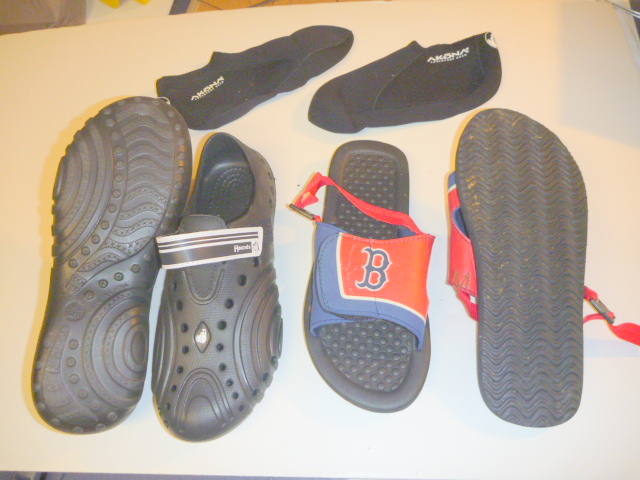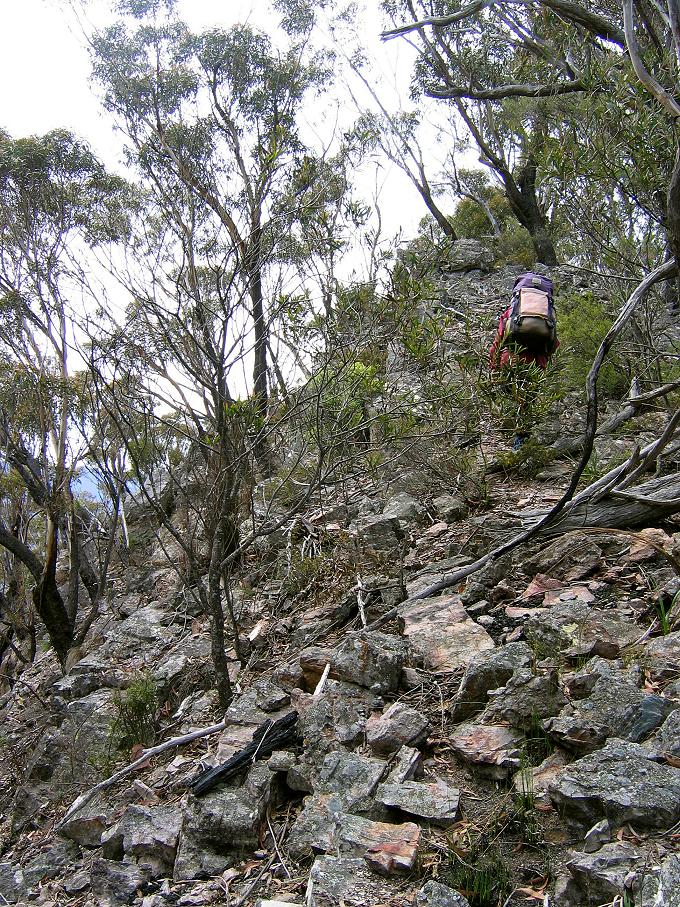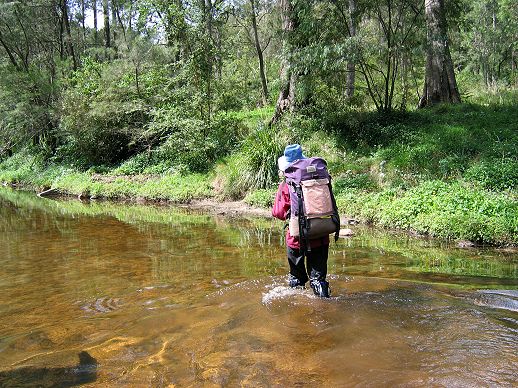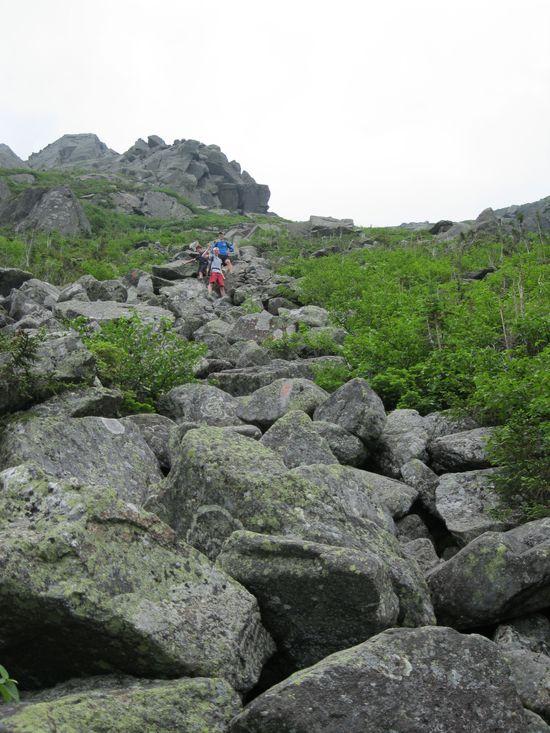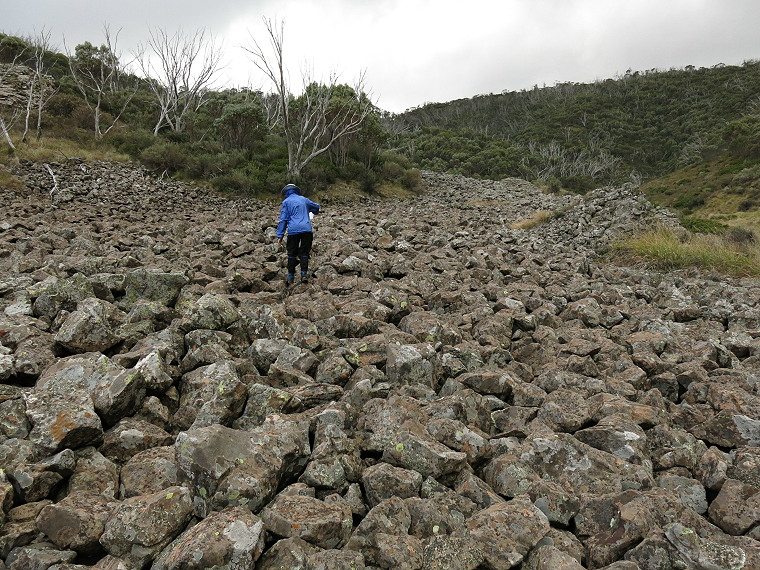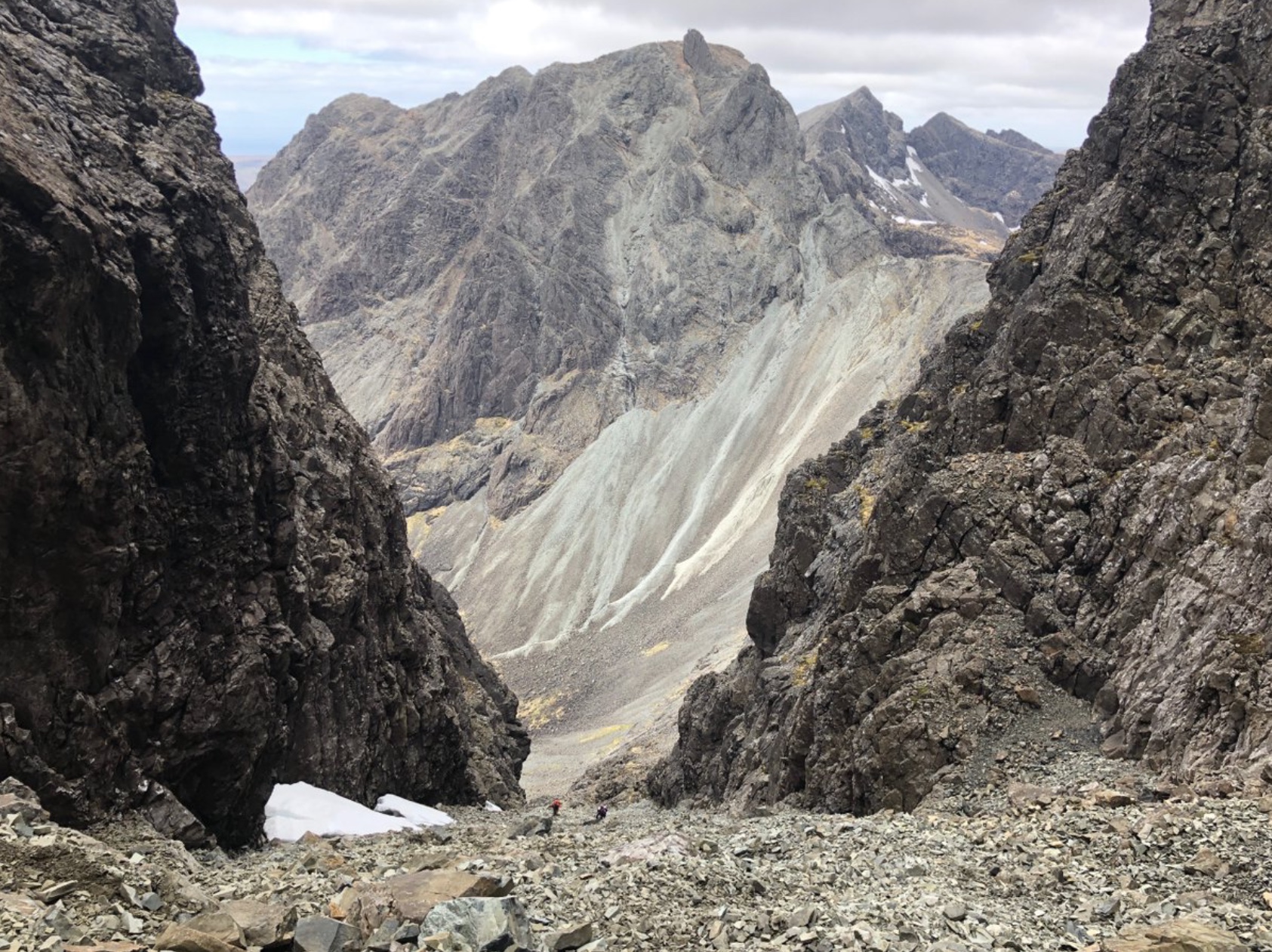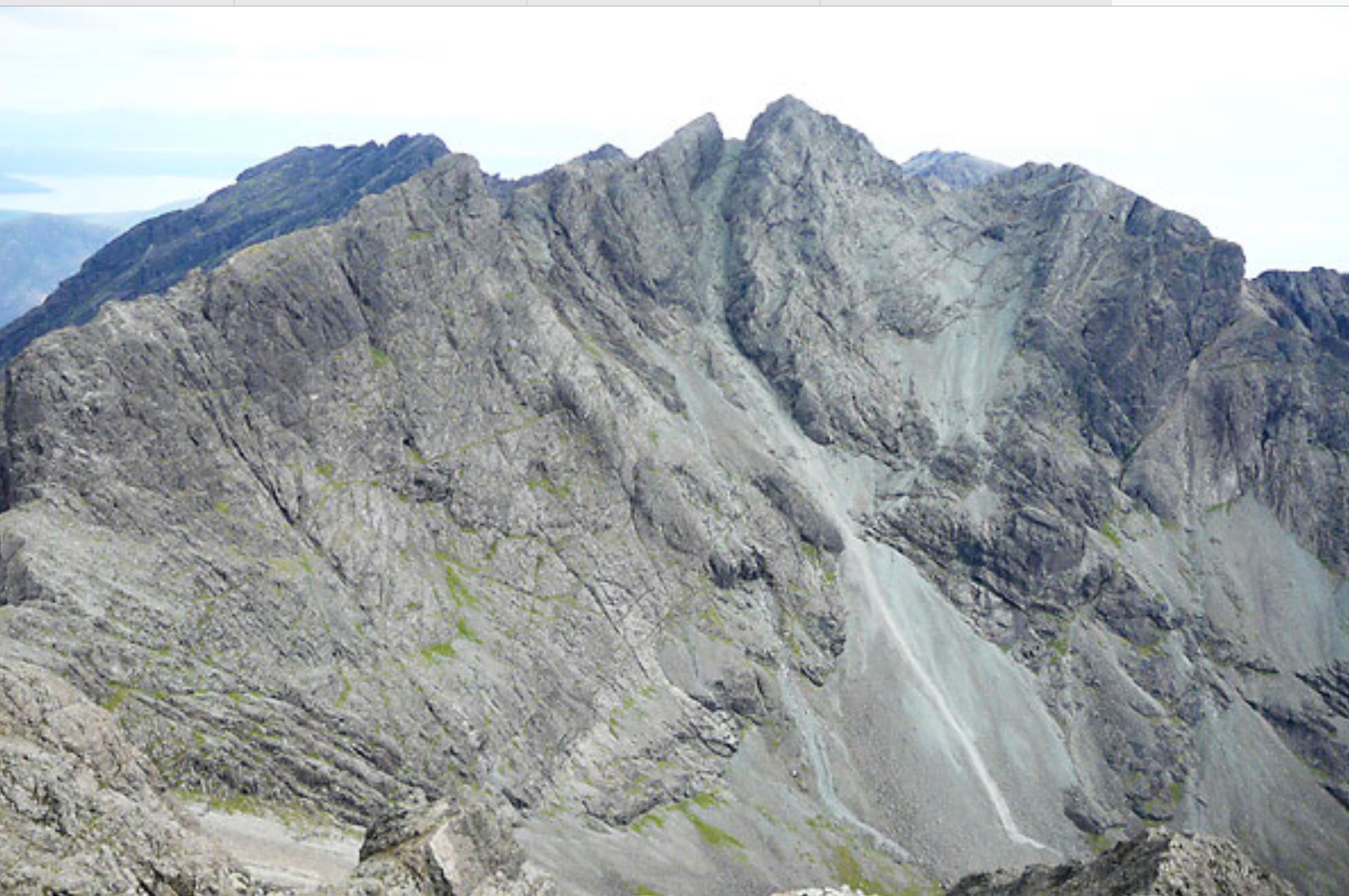Topic
No feeling in big toes
Forum Posting
A Membership is required to post in the forums. Login or become a member to post in the member forums!
Home › Forums › Gear Forums › Gear (General) › No feeling in big toes
- This topic has 50 replies, 32 voices, and was last updated 6 years, 4 months ago by
 Daryl and Daryl.
Daryl and Daryl.
-
AuthorPosts
-
Jul 11, 2018 at 5:36 pm #3546408
This just happened to me on a 5 day trip. My doctor told me it was compression of the medial plantar nerve caused by bunions along with lots of downhill impact. I have a month before my next 7 day trip on the High Sierra trail and now I am wondering if I should still go if feeling has not returned to my toes 😕. I would hate to cancel.
Jul 12, 2018 at 12:47 am #3546478It is pretty common. I used to get it after spending time in my army boots and carrying heavy loads. It is known as digitalgia paresthetica and is not an entrapment syndrome, that is it is probably not related to tightness of footwear. the injury results from repetitive trauma to the nerve supply to the toe, not necessarily to the toe itself – so the problem might result from trauma to the nerve as it passes over the ball of the foot.
7.5% of hikers reported numbness in the great toe in one study and it is common in army recruits getting used to heavy loads and sudden increase in marching/walking. In one study of AT hikers 7.5% reported toe numbness – 2 of whom had long lasting numbness.
No study confirms a correlation between the injury and the type of footwear when boots vs running shoes were examined. I have not been able to find any advice in the health literature on prevention (apart from not hiking) but it is a self limiting condition – that is if you stop hiking it will go away eventually.
Whether you should keep hiking with it is a different matter and probably comes down to personal risk tolerance and the advice from your practitioner of choice.
caveat: I am a Crit Care nurse and health researcher, not a podiatrist, so I have no expert knowledge on foot pathology, just an enquiring mind and access to journal articles. I won’t be answering personal health enquiries – this info is just for everyone’s general knowledge about the condition.
Jul 12, 2018 at 2:53 am #3546493And the winner of the Lazareth Award goes to Adriana M. Congratulations on resurrecting a thread dead for nearly 8 years.
BPL is a timeless repository.
[I didn’t do any research, just making a WA assumption.]
Jul 12, 2018 at 10:35 pm #3546579Greg – I agree! I didn’t recall this thread so I started reading it. At first I thought Bob Gross was back and then I started looking at the dates. It’s good to bring these back from time to time…
Jul 13, 2018 at 2:24 am #3546592No worries, ALL ten of my toes are numb and this peripheral neuropathy is due to L4 and L5 herniated discs. … but then I’m 75 and expect the body guarantee has expired a while back.
I just “deal with it”.
Jul 13, 2018 at 2:27 am #3546594No worries, ALL ten of my toes are numb and this peripheral neuropathy is due to L4 and L5 herniated discs. … but then I’m 75 and expect the body guarantee has expired a while back. I just “deal with it”.
But I would recommend the heat moulded “SOLE” insoles from REI. With them I have never had blisters on the bottom of my feet and very few elsewhere.
Jul 13, 2018 at 11:34 pm #3546683It’s when the brain guarantee expires you need to worry. (I need to worry?)
Cheers
Jul 14, 2018 at 12:04 am #3546685I tried to get my brain replaced under warranty but they said it was so unique they couldn’t find a replacement – new or used. Ever since I’ve been real careful and don’t use it much.
Jul 14, 2018 at 12:29 am #3546693Perfect!
Cheers
Jul 14, 2018 at 5:34 am #3546722Haven’t had toes numbed by backpacking on severe terrain, probably because I go solo, and can take my time. But due to a spinal fracture 20 years ago that limited feeling on the bottoms of the feet, have been very careful to avoid further nerve damage.
For this reason, I use low mids that fit well and are stiff enough to keep the feet from moving forward or twisting sideways in the boot, and provide good protection for the forefoot. Can’t believe the number of BP models on the shelves that do not. Very flimsy over much of the toes. A heavy boot is not necessary for protection, just a good quality one.
Problem is, one doesn’t know if a boot will continue to fit and perform well just from trying it on and walking around in the store or at home. That is the curse of buying footwear. You don’t know if a performance fit will be lost after considerable use, long after the boots are returnable.
For this reason, all new boots are used walking the dogs about two miles daily, including up and down a 500′ vertical hill. Won’t say ‘broken in’, because a lot of boots these days fit well right out of the box. When it seems like they are going to hold their shape, and keep the feet comfortable and firmly in place, and not get saturated by rain, only then do they get used for hiking.
Different boots must be found for differently shaped feet, but using light footbeds, I’ve had good luck with some but not all of Salomon light mids, because they were more narrow in the heel and wider at the forefoot and toes. Always sized with enough toe space to allow for swelling on long treks. None of the many Merrell boots tried have ever made it to the hiking stage in a above process. They look pretty, and some feel good at first, but that’s about it.
Despite efforts, have not been able to find a custom boot weighing much less than 2 lbs each, but the Salomons mentioned have weighed a little over a pound each which is acceptable given the protection and firm fit. I’ll draw fire for saying this, but would not consider using running shoes because they allow water to come over the low sides in front of the heels, and are too flimsy to protect the feet and keep them firmly in place, especially on the rocky and uneven surfaces here in New England.
All this raises an obvious question, and the answer is that every year a bunch of slightly used boots go on the consignment shelf of a local gear shop. They think I’m nuts, but just tell them that I’m the Imelda Marcos of boots. They don’t get it, and just look at me funny.
Jul 14, 2018 at 11:32 am #3546726would not consider using running shoes because they allow water to come over the low sides in front of the heels
We do not see that as any problem. In many cases we have to walk in the river bed or frequently cross the river: water up to the knees.too flimsy to protect the feet and keep them firmly in place, especially on the rocky and uneven surfaces here in New England.
Ah well, on really rough rocky ground we won’t wear anything but light joggers. They give us grip and proprioception; we find heavier footwear unreliable, even dangerous. To each his own.Cheers
Jul 15, 2018 at 12:30 am #3546801^^
+2!
But shoes are a very personal matter – what works for me might not work for another. Most important to try various kinds of footwear and see how you feel in them. You might not find out until after wearing a pair or more.
Jul 16, 2018 at 10:42 pm #3547067Good info here. I liked Javan’s “I have found that teaching myself to do toe-rotations helps to avoid this.”
I bike in my sandals and I backpack in my sandals, and I sometimes get the big-toe numbness in both scenarios. When I start feeling numbness I imediatley loosen my toe straps and wiggle my toes (while walking or biking) until the numbness goes away. This can be anywhere from 5 minutes to an hour for me. I can’t leave them loose forever because I come to mountain sections (backpacking) where I need my footwear tightly secured to minimize other injuries.
In camp I always wear the sandals loose so they will feel like healing slippers.
-Barry
The Tetons were made for Tevas
Jul 19, 2018 at 4:40 am #3547405Roger,
RE: “In many cases we have to walk in the river bed or frequently cross the river: water up to the knees.”Feel for you, but in your situation would do the same. Can only think of being surprised like this twice: Once, when doing the Mud Pond Carry with a canoe up into the lower Allegash Maine lake chain; and second, when planning to do a supposed trail along the East boarder of Zirkel Wilderness in northern Colorado. The carry turned out to be a stream bed that gradually became a swamp, and then a waist deep pond before reaching the next lake. The trail in Zirkel dead ended at a chain link fence probably installed by a landowner. Proceeded north into a marsh that gradually became waist deep, and seemed to go on forever. Finally reaching a dirt road, offered an ATVer cash to haul me to the next campground where the car had been parked a week earlier. Game over.
The rest of the time, have also carried water shoes whenever fords could be anticipated. This kept the light mids dry and functional which for me really improves the trip and protects against injury to the feet, so it is worth the extra weight of the water shoes. That is why there are probably threads on BPL so often about finding (or making) water shoes that are both light, functional and packable.
Jul 19, 2018 at 4:49 am #3547406Hi Sam
“Feel for you” is definitely the wrong mindset. We fully expected to be in the river a lot of the tie: in that country it is the only way to go. With light mesh joggers it is not a problem, and taking other footwear as well would be pointless.
Cheers
Jul 22, 2018 at 11:58 pm #3547991Agree with you, Roger, in those conditions. Possibly was not clear about that. Sounds like your light mesh joggers served as both water and trekking shoes.
Do think that in mountainous terrain that is harder on the feet, and can produce numbing and other issues, that carrying both more protective footwear and water shoes is worth the added weight. The latter need to have a good tread to avoid slipping in the drink, some protection from numbing cold (like a very light dive sock), some protection from objects that can stub toes or worse (especially since less can be seen underfoot in the water), and be able to stand up to hard wear. How to accomplish all this at a light weight is probably the subject for another thread, but your light mesh joggers sound as good an approach as any. Attempts to go lighter, as shown below, have worked for fording streams, but not the conditions we have described above:

The plastic shoes were cheap, have some tread and are protective, but would not trust them for a long haul. The embellished shower shoes work, but would trust them even less – only for short fords across shallow and even creek bottoms. The neoprene sox fit in both, protect from both cold and objects, and are around 2 oz for the pair, but worn inside mesh joggers might get pretty sweaty after a while. They might be worth putting on under mesh joggers just for when the feet will be immersed for a while.
Maybe you would consider an article on the lightest and best mesh joggers. A pair attached to my pack would be much better than what you see in the photo, I think.
Jul 23, 2018 at 2:40 am #3548002Hi Sam
Sounds like your light mesh joggers served as both water and trekking shoes.
Yep, and over the harshest terrain too.
Quite frankly, in this sort of terrain we would never ever risk boots of any sort. With light joggers we have good proprioception and can feel with our feet what we are doing. No way could we do that with boots: we would sprain an ankle very fast.
But those same joggers are the ones we walk down the river in.
Yes, same trip! Same socks too I think.
Cheers
Jul 23, 2018 at 3:23 am #3548010Rog,
That wading photo reminds me of the two times I backpacked Utah’s Coyote Gulch in the Grand Escalante area in 2009 & 2012. LOTS of wading on those hikes. I used Merrill MOAB low hikers that were mostly mesh. They dried quickly, as did my wool hiking socks.
SKOAL!
Jul 23, 2018 at 4:35 am #3548019Yeah, thick wool socks seem to dry (almost) very quickly when you are walking – at least in NON-GTX shoes!
Cheers
Jul 23, 2018 at 5:35 am #3548022Hi Roger,
I’m beginning to better understand what you are getting at. As for harsh terrain, here is a photo taken by Jake D on Mount Washington. He posted it on the thread following an excellent article, with awesome pictures, by Ryan Jordan in 2013: https://backpackinglight.com/techniques-for-talus-jordan/
The gray rocks are the trail. The green vegetation is basically impassable, although the picture doesn’t show it. (Regret no attribution for the photo – forgot who provided it)
For years, experienced hikers around here have been telling me that you need boots for that stuff. Of course, at the beginning of those years, hikers out for more than a day were carrying 50+ lb. packs. With BPL, packs are lighter now, and one can move more nimbly than before. Even so, for longer backpacking trips, I still tend to think that a light but protective boot is safer on boulder fields that even healthy dogs cannot negotiate due to injury to their paws. I’m not talking about boots that clamp the ankles like a straightjacket. The light Salomon mids I posted about earlier on this thread leave the ankles completely free to move naturally, but still protect the ankles and the whole foot, including the toes and achilles tendons. As with any footwear, success finding the perfect fit for your foot provides a level of comfort that is addictive and not conducive to change.
So I and a number of diehards around here are not convinced, and don’t think there would be so many responses to this thread if backpackers used light but more protective footwear. All the same, you have convinced me that a pair of very light mesh running shoes should be carried, maybe even on day hikes.
Stuck in the Mud
Jul 23, 2018 at 6:32 am #3548027Ah, scree runs – and scree boulder runs. Yeah, we know them. A light pack and nimble feet.
And a bit of a fear of having light snow on the rocks. Had that once – rather tricky! Went slowly.Cheers
RogerJul 24, 2018 at 4:38 am #3548188Roger – The photo in my last post was edited to provide attribution to Jake D, who posted it in the thread following Ryan Jordan’s excellent 2013 article about scree and talus, at: https://backpackinglight.com/techniques-for-talus-jordan/
Thanks for the tips.Aug 18, 2018 at 9:42 pm #3551941@ Greg … Third post this page
I believe you mean Lazurus. These forums are a treasure trove. I learn something every visit.
Aug 18, 2018 at 10:17 pm #3551943Basalt flows:

Cheers
Aug 19, 2018 at 10:19 am #3552033Talking of scree, 30 years ago, back in the days of clumpy boots, I used to run these scree slopes. You can see the light lines down the slope in the mid distance, made up of small stones and gravel, with a texture something like spring snow. I used to get down 600 feet in a couple of minutes, the noise was tremendous. Huge fun.
I think if if you tried that in mesh shoes both the shoes and your feet would be trashed by the bottom. That’s not to say you couldn’t do it, just that you’d have to go <i>very</i> slowly.


This second gully was pretty much run out even then.
And just to show that it doesn’t <i>always</i> rain in Scotland :

-
AuthorPosts
- You must be logged in to reply to this topic.
Forum Posting
A Membership is required to post in the forums. Login or become a member to post in the member forums!
Our Community Posts are Moderated
Backpacking Light community posts are moderated and here to foster helpful and positive discussions about lightweight backpacking. Please be mindful of our values and boundaries and review our Community Guidelines prior to posting.
Get the Newsletter
Gear Research & Discovery Tools
- Browse our curated Gear Shop
- See the latest Gear Deals and Sales
- Our Recommendations
- Search for Gear on Sale with the Gear Finder
- Used Gear Swap
- Member Gear Reviews and BPL Gear Review Articles
- Browse by Gear Type or Brand.

